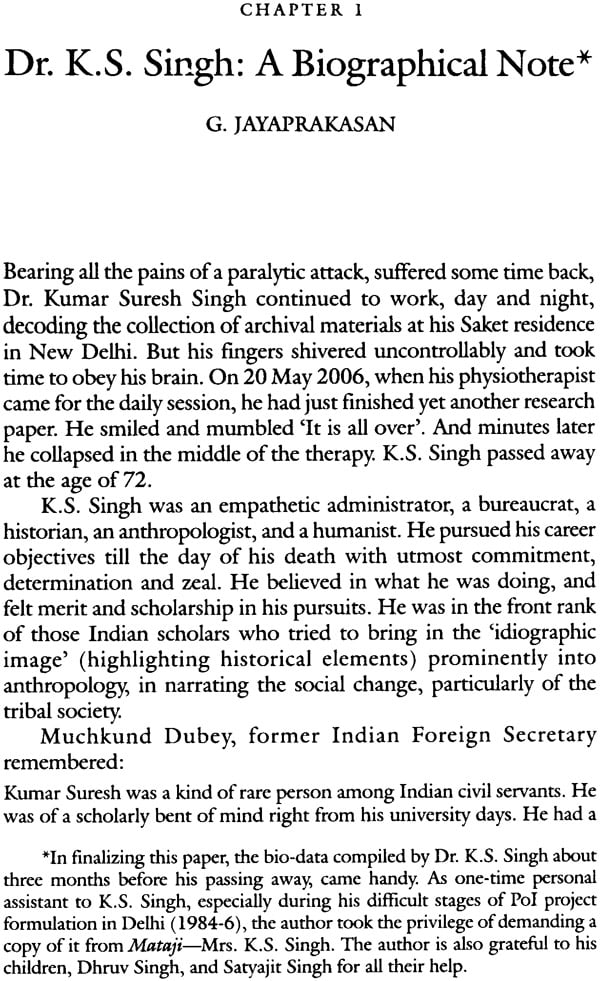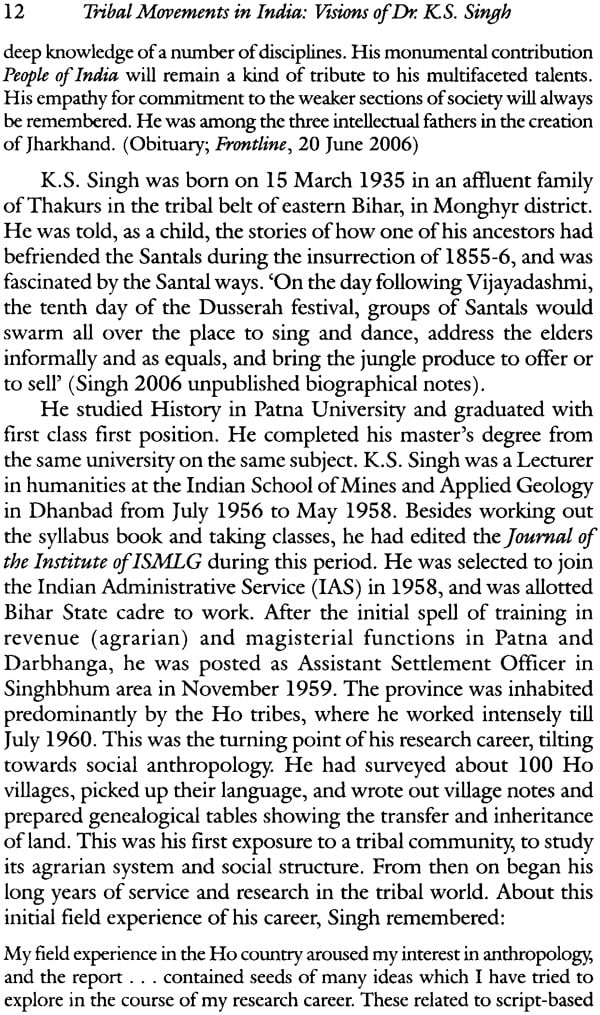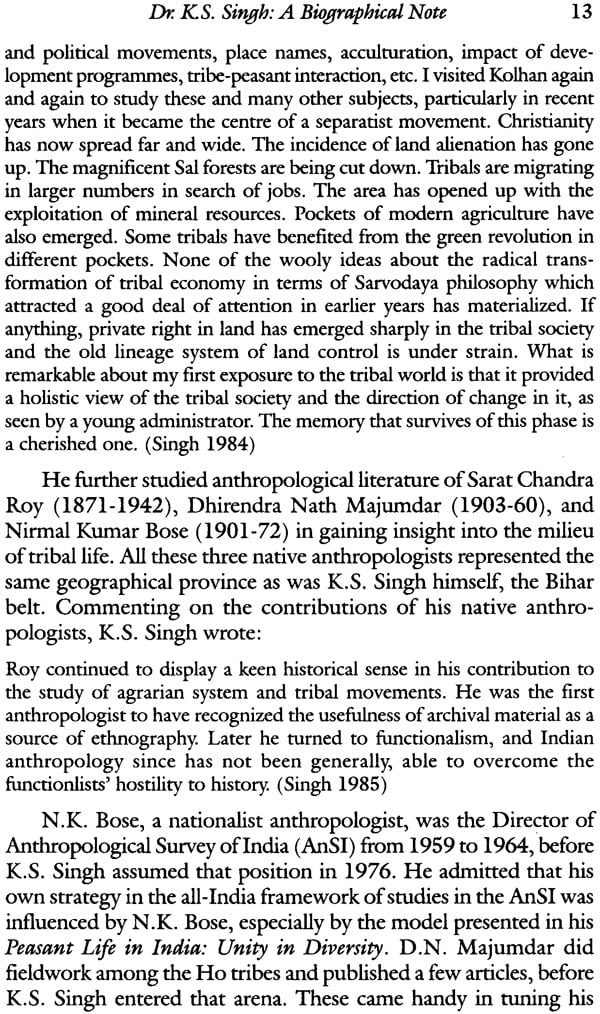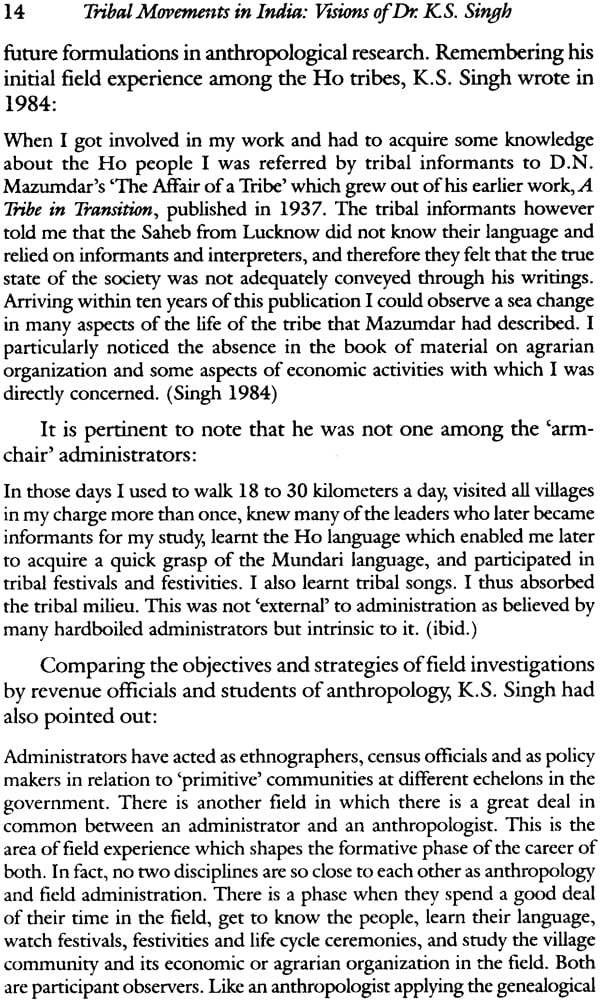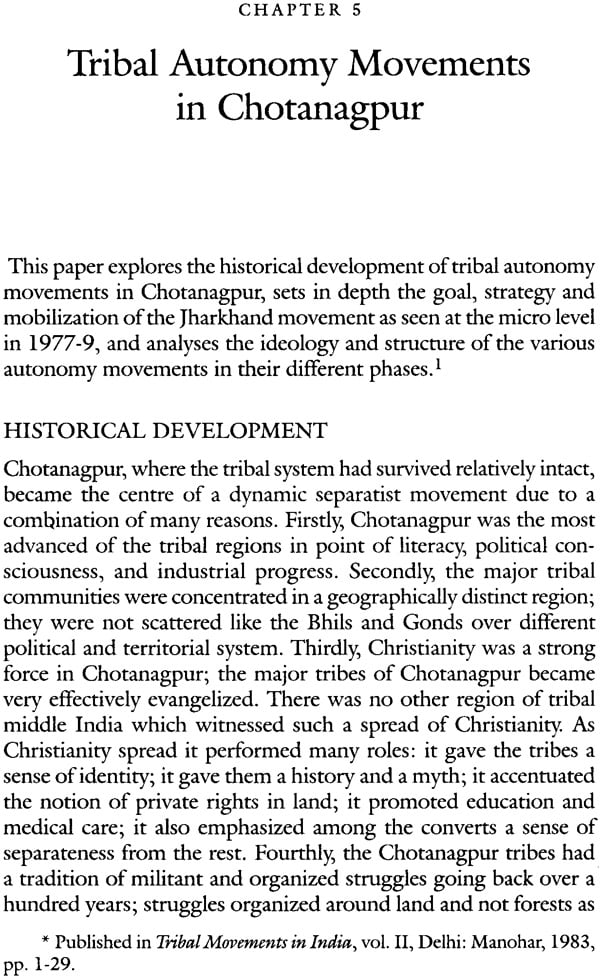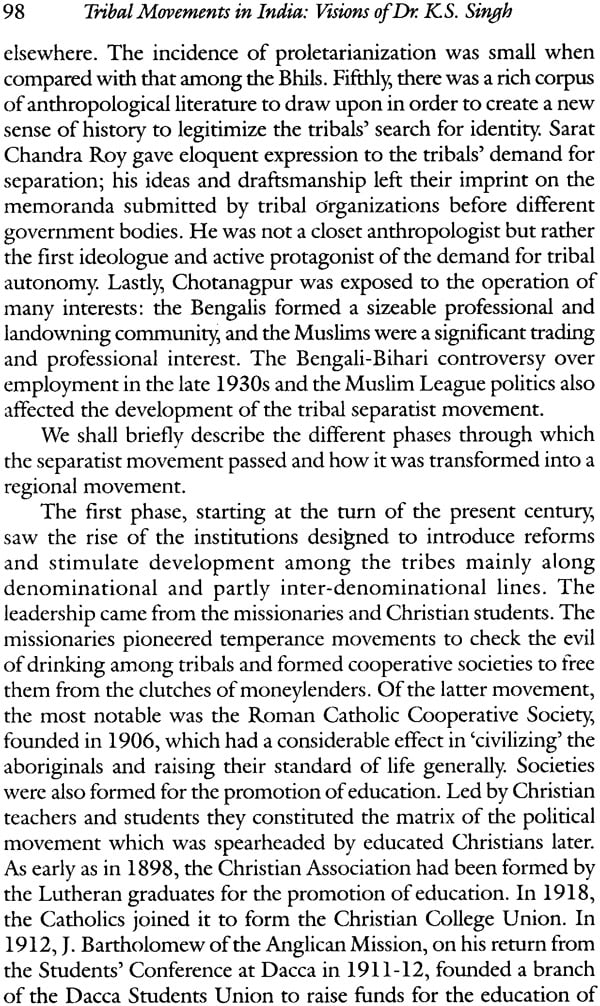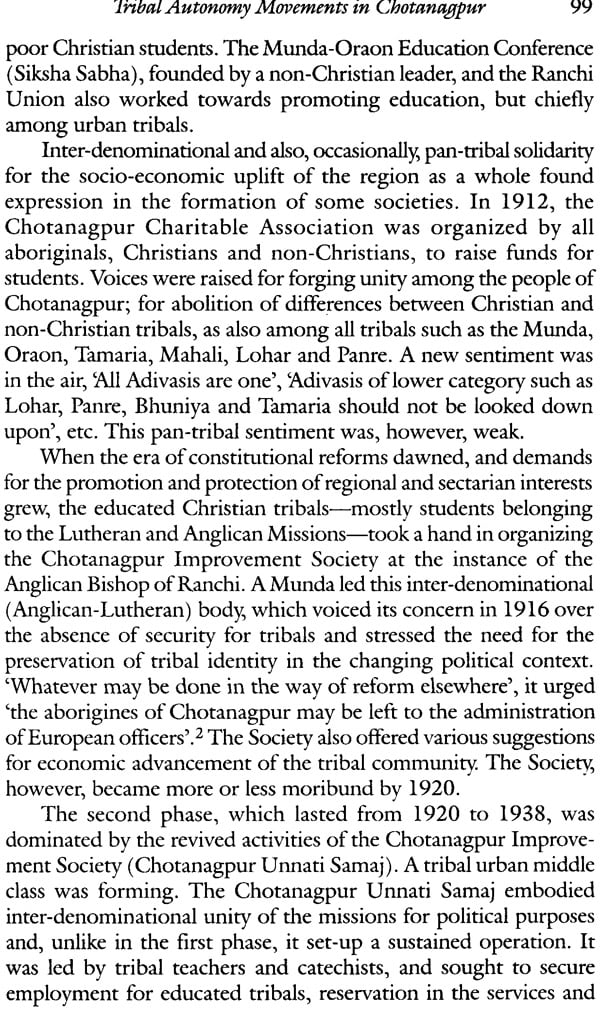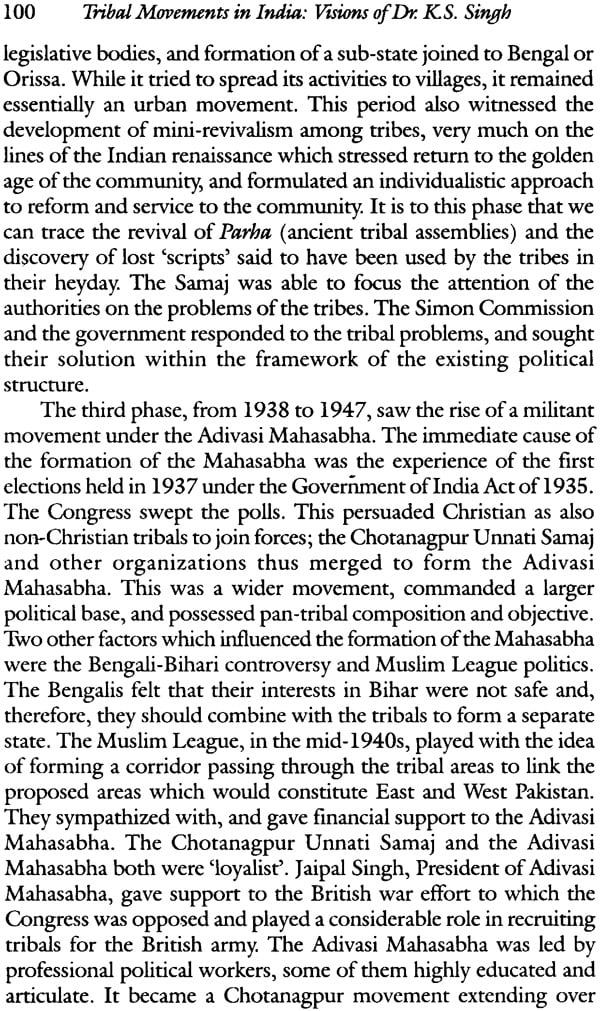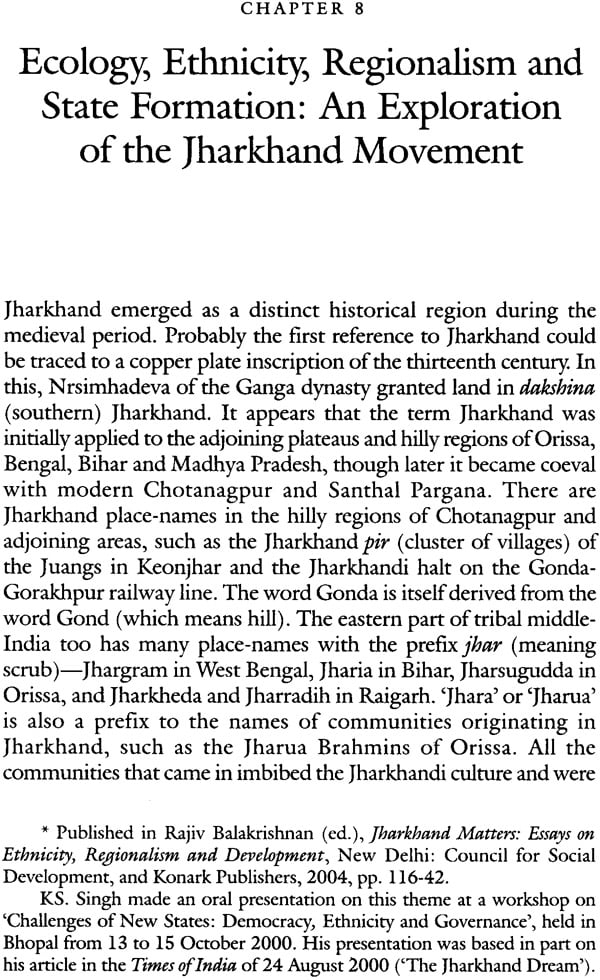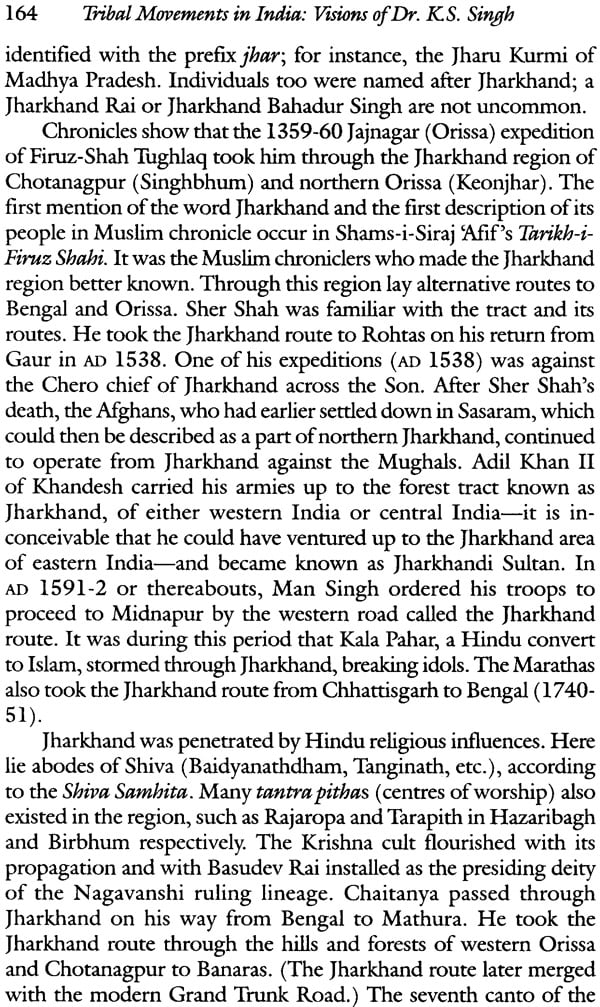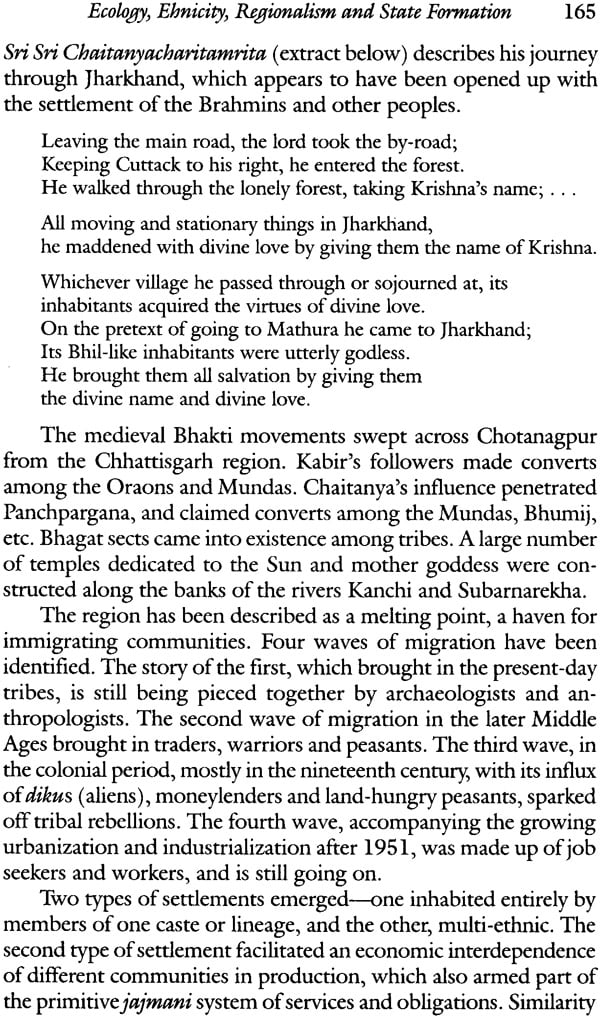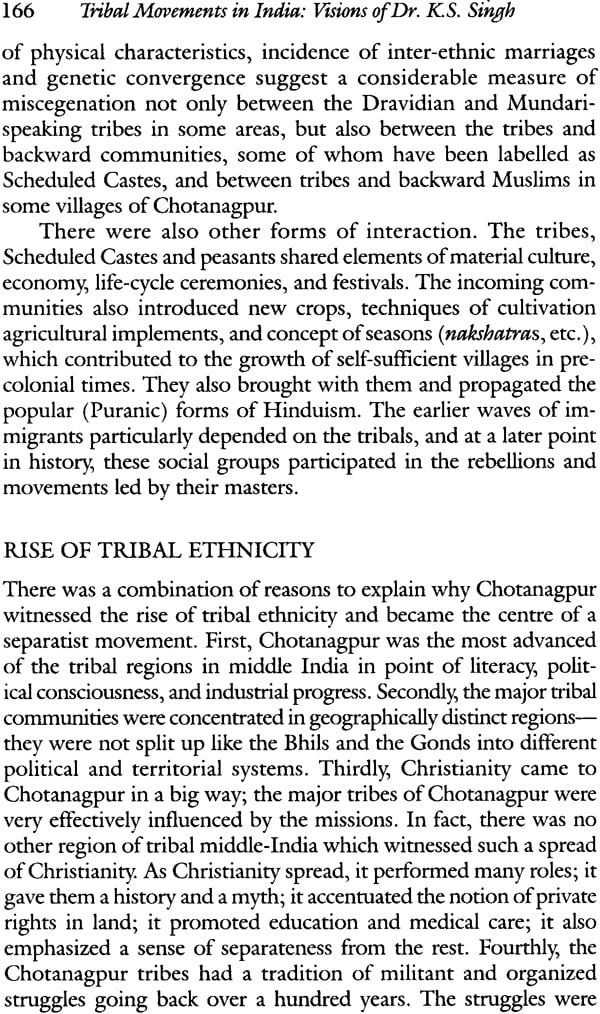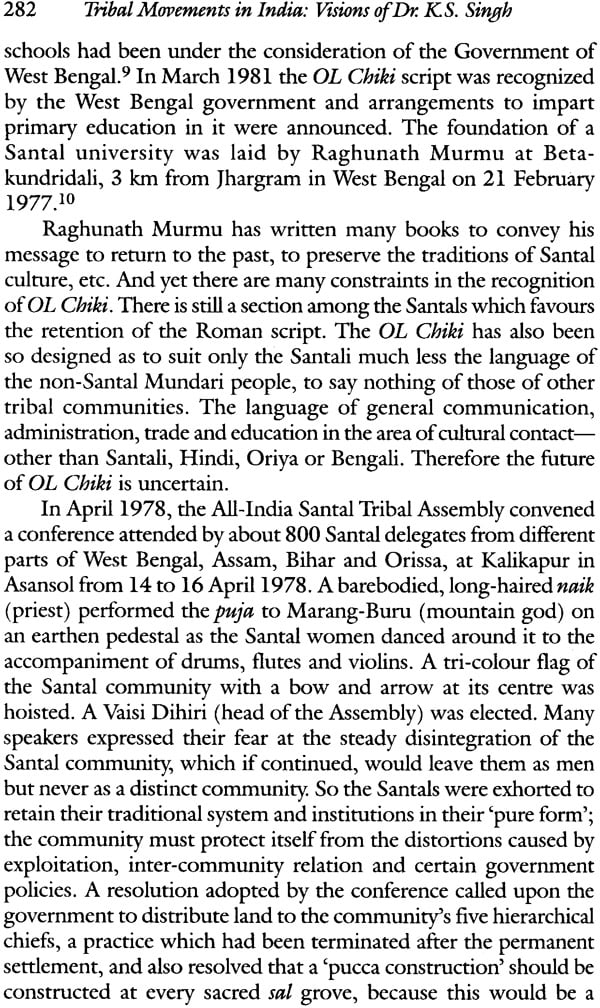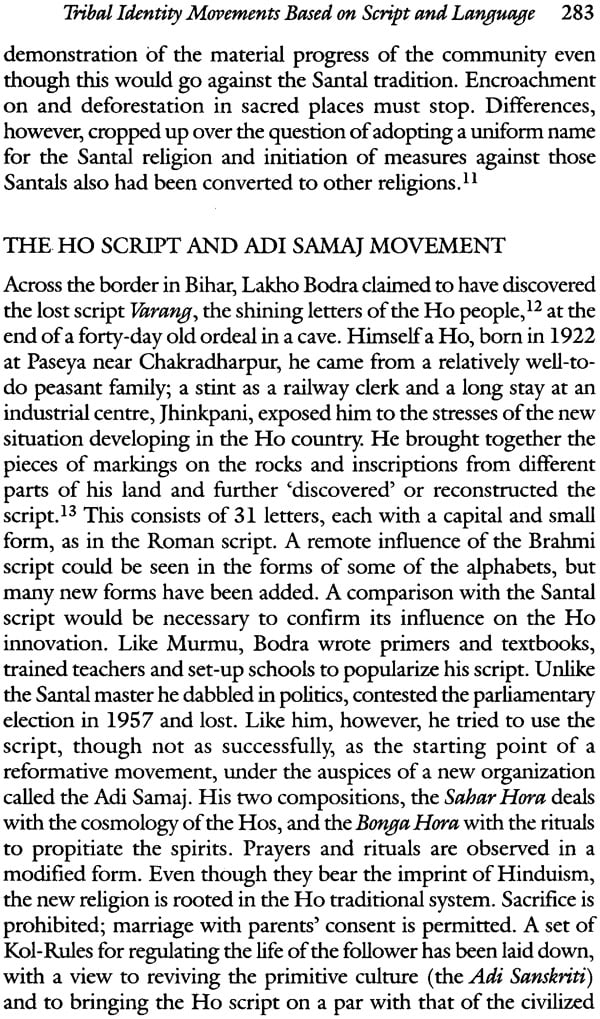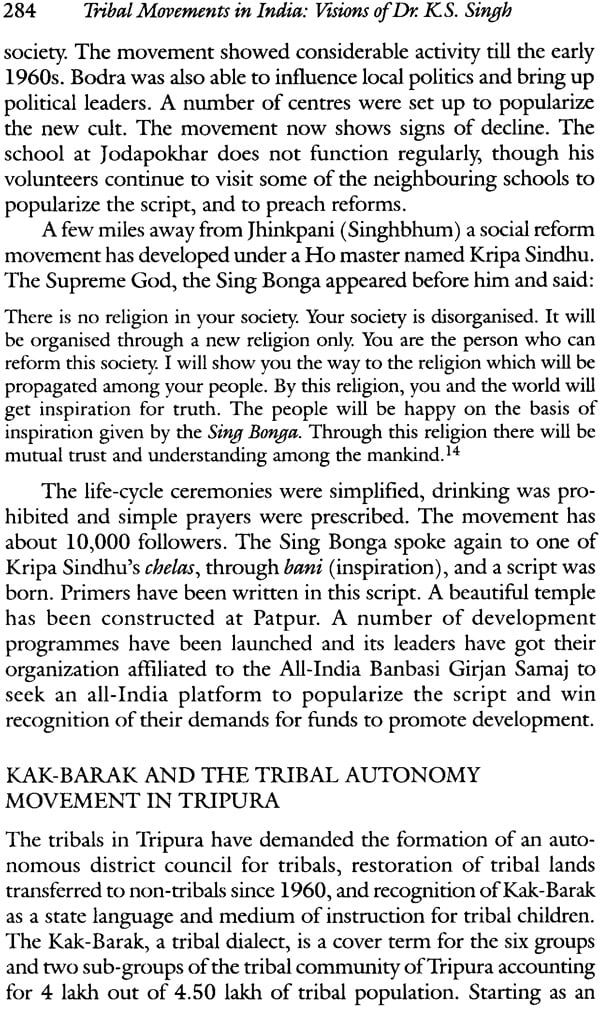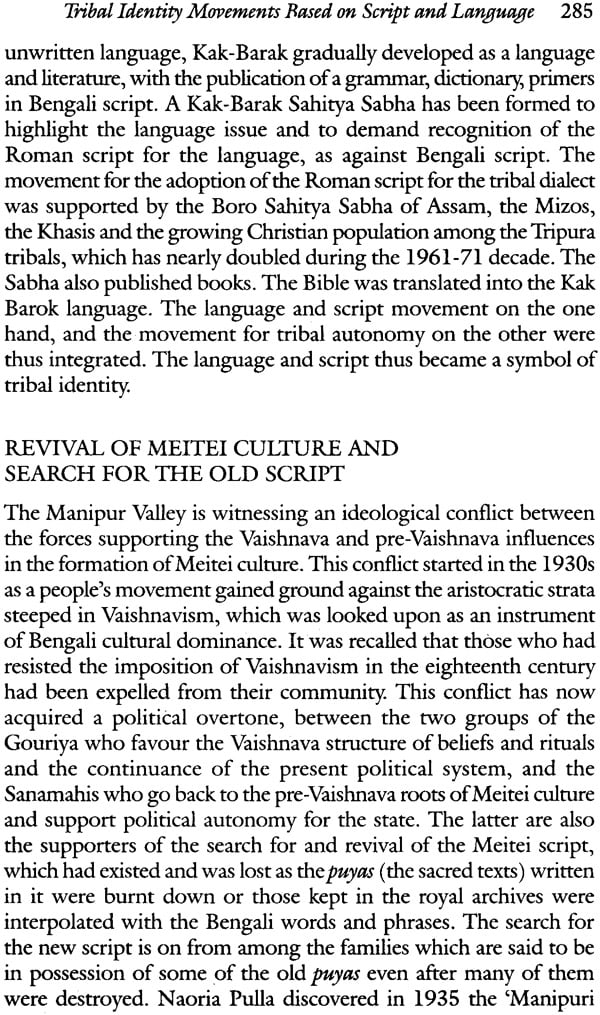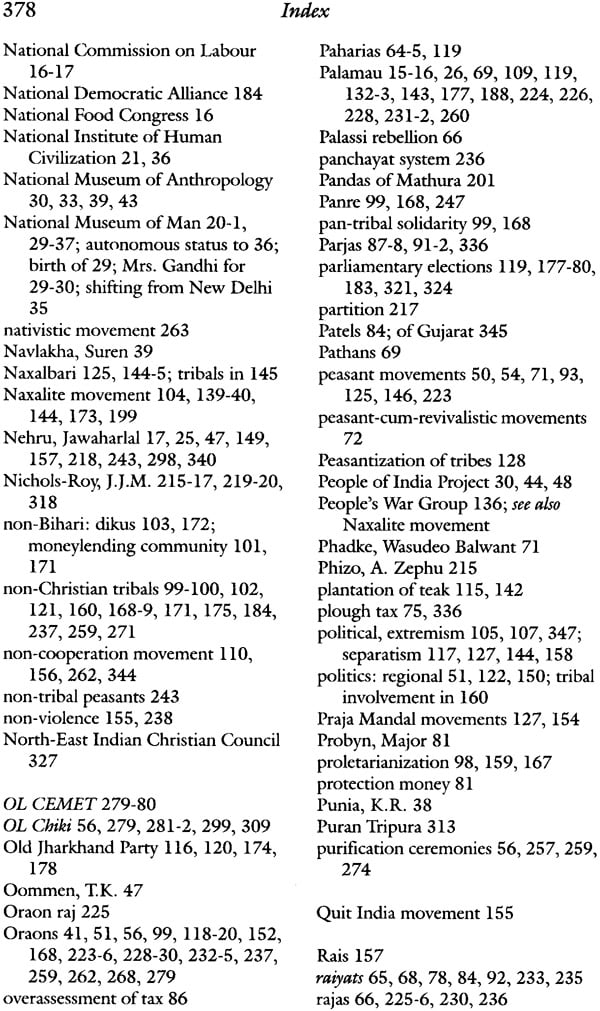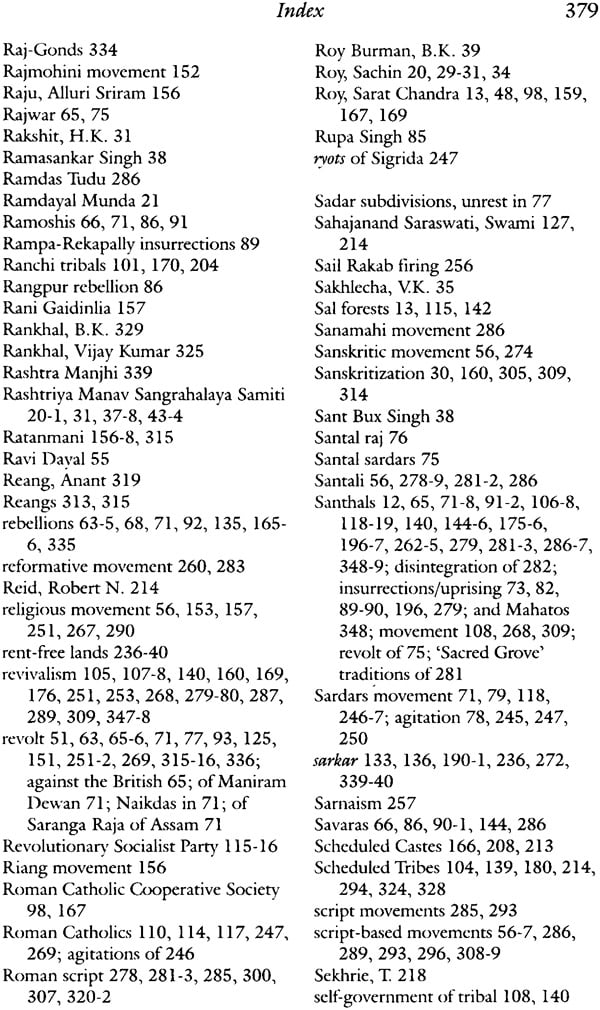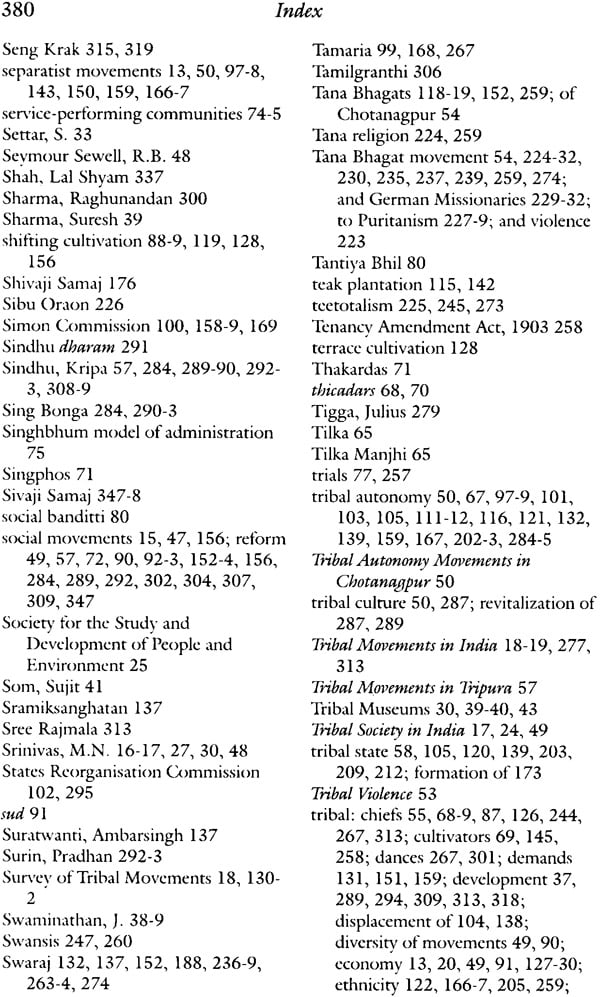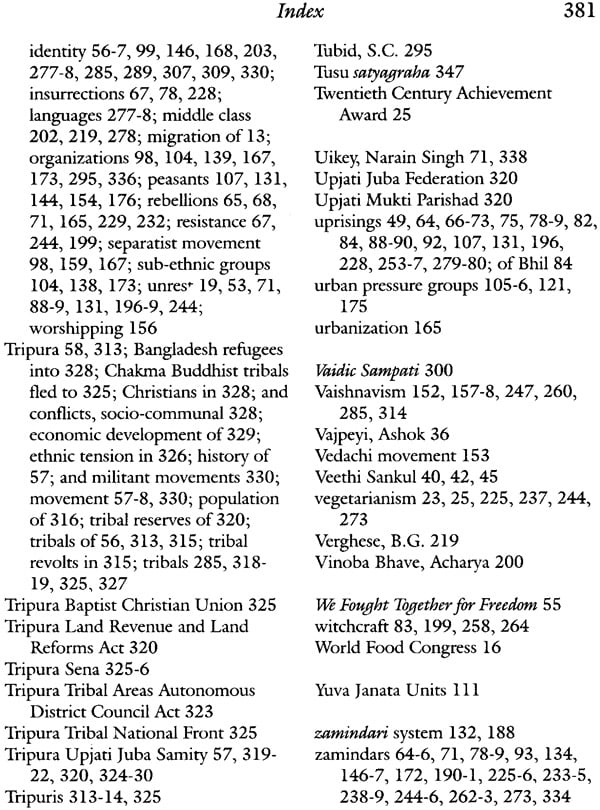
Tribal Movements in India (Visions of Dr. K. S. Singh)
Book Specification
| Item Code: | NAM489 |
| Author: | Kamal K. Misra and G. Jayaprakasan |
| Publisher: | Manohar Publishers and Distributors |
| Language: | English |
| Edition: | 2012 |
| ISBN: | 9788173049729 |
| Pages: | 381 |
| Cover: | Hardcover |
| Other Details | 9.0 inch X 6.0 inch |
| Weight | 640 gm |
Book Description
Dr K. S. Singh was a versatile scholar apart from being an administrator and an ardent practitioner of historical ethnography. In course of his long tenure of explorations on tribal matters, spanning over four decades, Dr. Singh penned many essays on tribal movements, tribal peasant interactions, tribal customary law, tribal economy and so on. Much to the chagrin of historians and anthropologists, he had adopted a combined methodology of historical research and anthropological fieldwork in making his points before readers and decision makers. The present volume presents a selection of those landmark essays penned by Dr. Singh on tribal movements in India.
Kamal K. Misra is professor of Anthropology at the Central University of Hyderabad and is currently on deputation to the Government of India as Director of Indira Gamndhi Rashitriya Manav Sangrahalaya (National Museum of Mankind), Bhopal. He is also holding the additional charge of Director, Anthropological Survey of India, Kolkata.
G. Jayarakasan was onetime Personal Assistant of Dr. K.S. Singh, when he was the Director General of Anthropological Survey of India & National Museum of Mankind in the 1980s. Currently he is Private Secrelary to Director, IGRMS.
This volume presents some of the well-known scholarly essays penned by Dr. K.S. Singh on tribal movements, based on his decades-long intensive research on the tribes of India. The initial two essays are attempts of his one-time Personal Assistant, G. Jayaprakasan, to enlighten the readers of the enigmatic personality of Dr. Singh, and his undeniable contribution towards starting the Museum of Mankind. The Museum took birth on 21 March 1977 under his dynamic leadership and guidance. The third essay is an evaluation of his various writings on tribal movements, by Prof. Kamal K. Misra, the successor director of Anthropological Survey of India (Ansi) and Indira Gandhi Rashtriya Manav Sangrahalaya (IGRMS). We consider this as our esteemed homage to Dr. Singh, on the occasion of the 36th Foundation Day of IGRMS which we are celebrating on 21 March 2012.
When we planned the celebration of 36th Foundation Day of IGRMS, we decided to hold a National Seminar on 'Tribal Unrest, State Policy and Empowement in Contemporary India', to analyse the reasons for tribal deprivation, forcing them to develop a separatist tendency, and their remedies. The subject matter was the prime concern of Dr. K.S. Singh as a young administrator in the late 1950s when took over the revenue administration of a part of Chotanagpur province of eastern India. Right from the beginning, Dr. Singh showed empathy and humanism in the application of his authority as a revenue officer on tribal affairs. He had later chosen to pursue his scholarship on this issue persistently, contrary to the expectations of his fellow administers. When he became the director Ansi in the 1970s, Dr. Singh drew up a framework to study the tribal movements in different parts of the country as a national research project. He had urged his fellow researchers to adopt a combined methodology of historical research and anthropological fieldwork in order to process the material. Dr. Singh pioneered historical erhnographic method and applied it in the analysis of several tribal issues in later course of his research career.
It is well known that about 8.2 per cent of the Indian population, descrihed as Scheduled Tribes in constitutional terms, have largely remained marginalized even after 65 years of Independence, as they could not avail the benefits of development. A cursory look reveals that deprivation of sources of livelihood, landlessness, unemployment, poverty and increasing social exclusion are among the major factors leading to tribal unrest in India. There is a long history of encroachment of tribal land, forest and forest produce, water and minerals by outside agencies. Contemporary neo-liberal economic policies, plethora of imposed development schemes implemented by the state and installation of mega industries in their habitats are leading to further marginalization of the tribes. Forced eviction and land acquisition for mining, erc., are common in many tribal inhabited states. The current developmental model of liberalization, privatization, commoditization of land, and spread of industrialization by the entry of multinational companies have impinged upon their social, economic, cultural and political rights resulting in further deprivation in many ways. These are the major identity markers of unrest in tribal society, leading to organized movements. This is the case of relative deprivation in sociological terms, leading to organized movements, as suggested by stalwarts like James Davis, Ted Gurr and Denton Morrison, among others.
While the theory of relative deprivation is very general in nature, the New Social Movements approach explains how the social movements are linked to a mal-functioned modern democratic system of the present times, undermining individual freedom, equality and fraternity, where the working class is reduced to consumers, subject to the prevailing market forces. Alain Touraine and Jurgen Habermas are among the prominent theorists endorsing such views. Touraine, for example, holds that as the technologies of state control, of mega-corporation economics, and mass media advance, there is a reduction of individual liberty. For Habermas, the expanding structures of state and market economy colonize the public and private sphere of individuals, which he calls the 'lifeworld', which includes family, education, art, religion, etc. Therefore, he asserts that private lives of the individuals become steadily more politicized by this double encroachment.
Although Touraine's and Habermas' approach of New Social Movements had in mind the people of the post-modem societies, particularly in Europe, it has its relevance in the Indian context as well. Indian tribes had to confront these situations way back in history, when their forest abode and sources of livelihood were systematically encroached and mutilated by the alien forces. Even the Draft National Tribal Policy of India endorsed that 'alienation of tribal land is the single most important cause of pauperization of tribals, rendering their vulnerable economic situation more precarious'. The tribal movements of the past or present are, therefore, basically linked to the people's anxiety for autonomy, self-governance, economic advancement and preservation of their language and culture. Poor governance is the main triggering factor for people clamouring for self-rule and autonomy. Tribes at various points challenged the dominant oppressive agents and aimed towards variously articulated autonomy, self-rule and self-determination.
Dr. K.S. Singh developed a deep insight into the problems that the tribes in India faced, before and after Independence. As an administrator posted in tribal belts, he had to deal with the realities of land and tribal development issues on a day-to-day basis. As a scholar, he had the requisite scholarship to examine how and why Indian tribes were entrenched in the vicious circles of deprivation and exploitation. Because of his grip over the history of tribal areas in Chotanagpur and other regions, and the problems they currently faced, Dr. Singh's essays on tribal movements are diachronically complete with the details from the past to the present. Whether he deals with the issue of land or forest or language or religion, he begins from the earliest possible time to the present, making his analyses holistic rather than periodic and sketchy.
We are indeed grateful to Smt. Bimleswari Singh, the wife of Late Dr. K.S. Singh, and his worthy children for allowing us to select some of the earlier published writings of Dr. Singh in this volume. We are also grateful to many publishers and copyright holders, who have been generous in according us necessary permission to reproduce the essays of Dr. K.S. Singh. It was extremely kind of Manohar Publishers & Distributors, Delhi, for agreeing to bring out this volume swiftly, for which we express our gratitude.
| Preface | 7 | |
| 1 | Dr. K.S. Singh: A Biographical Note | 11 |
| 2 | Dr. K.S. Singh and the National Museum of Mankind | 29 |
| 3 | Tribal Movements in India: Visions of Dr. K.S. Singh | 47 |
| Selected Essays of K.S. Singh | ||
| 4 | Tribal Movemets | 63 |
| 5 | Tribal Autonomy Movements in Chotanagpur | 97 |
| 6 | Agrarian Dimension of Tribal Movements | 125 |
| 7 | The Freedom Movements and Tribal sub-Movements, 1920-1947 | 149 |
| 8 | Ecology, Ethnicity, Regionalism and State Formation: An Exploration of the Jharkhand Movement | 163 |
| 9 | A Forest Satyagraha | 188 |
| 10 | Tribal Violence | 196 |
| 11 | Tribes, Partition and Independence | 202 |
| 12 | Tribal Peasantry, Millenarianism, Anarchism and Nationalism: A Case Study of the Tana Bhagats inChotanagpur, 1914-1925 | 223 |
| 13 | Birsa Munda and his Movement in Chotanagpur 1874-1901 | 243 |
| 14 | Haribaba and his Movements Changes in Chotanagpur | 262 |
| 15 | Tribal Identity Movements Based on Script and Language | 277 |
| 16 | Script Reform and Development: A Study of Two Movements among the Ho Tribe in Singhbhum | 289 |
| 17 | Tribal Movements in Tripura | 313 |
| 18 | The Gond Movements | 334 |
| 19 | The Mahato-Kurmi Mahasabha Movement in Chotanagpur | 342 |
| Appendix: | Academic Output | 351 |
| Index | 371 |
